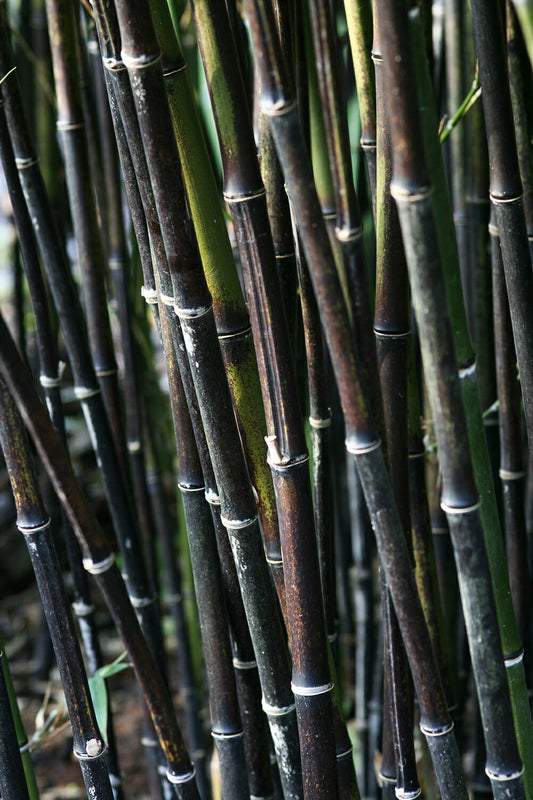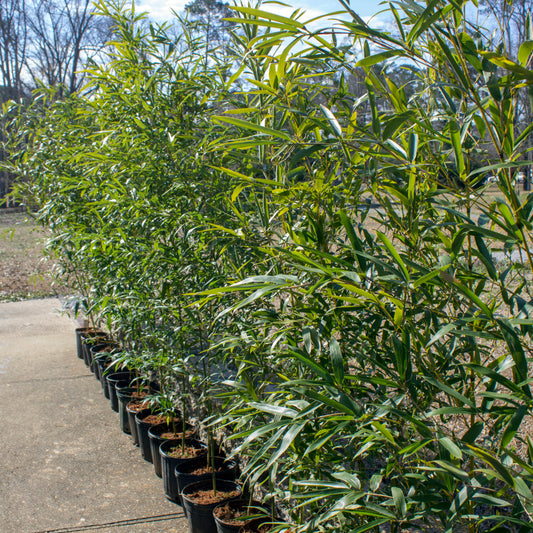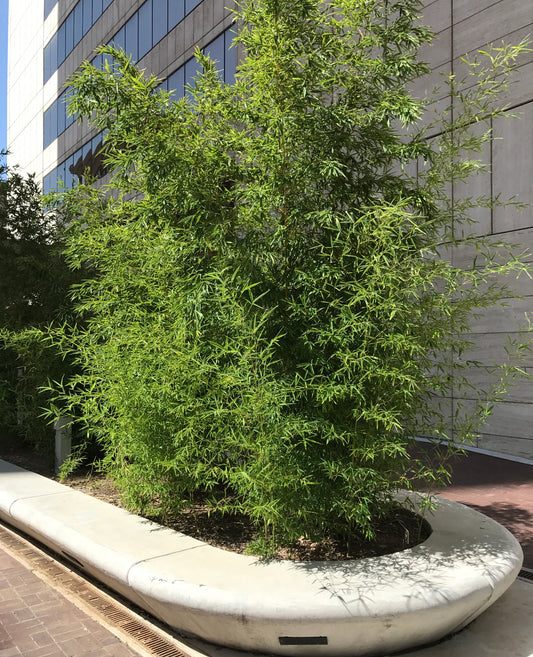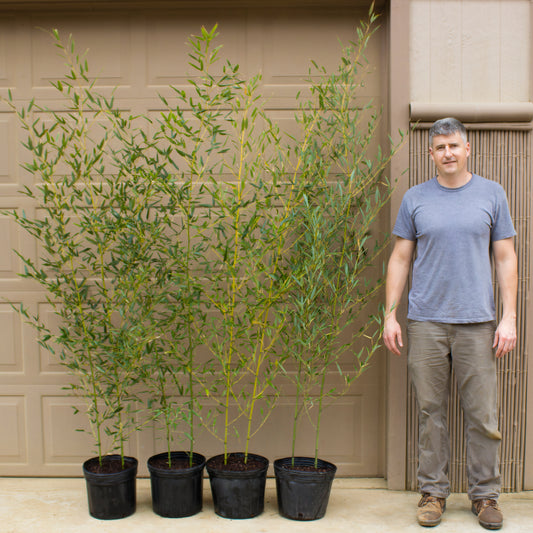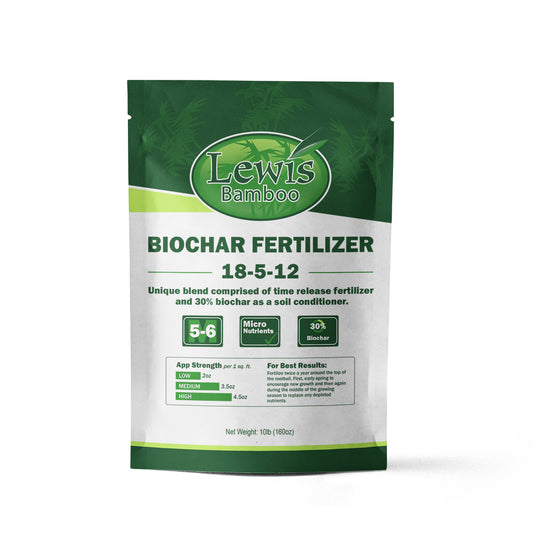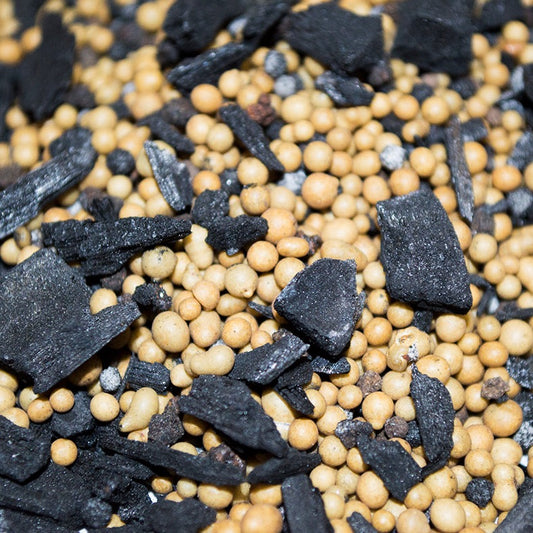How to Plant Bamboo in Pots & Containers
Many of our customers plant our bamboo in containers, these tips should help guide you in the right direction! While bamboo is not a picky plant, when planting in a container you have more control, so take advantage! The better the conditions your bamboo has, the faster and healthier it will grow.
Container Type
Planters should be as large as your space will allow. The more your bamboo has room to grow, the healthier it will be. Larger planters also offer more insulation from the cold, better protecting your bamboo from freezing.
We have a container great for tight rooftops and balconies. It’s made of thick COR-TEN steel and built by Lewis Bamboo. Just click the image to learn more.

Soil
Soil Mixture
Proper soil composition is crucial as it allows for proper drainage and optimal levels of nutrients.

|
Recommended Commercial Potting Mixes:75% Miracle-Gro® Moisture Control® Potting Mix |
Alternative Products
Most major retailers like Lowe’s, Home Depot, etc. have local providers of top soil and composted manure. These can usually be found in 50lb or .75-2 cubic feet bags. Mixing 20% composted manure is recommended for long term nutrient supply and the addition of beneficial bacteria to the mixture. Any variety of composted manure is acceptable. Always use composted manure and not fresh manure. The variety of manure is not critical but it has to be properly composted. Next is the Biochar. Biochar acts like a sponge in the soil allowing for proper nutrient absorption. Biochar can be added at a 5% or greater rate for best results.
Soil Warming Cables
If you live in a colder climate planting above ground may not be an option, however you can install soil warming cables that will prevent your bamboo from dying at sub-freezing temperatures.
Watering
• Water well and keep a check on the soil and allow it to dry out a little between watering cycles.
• Mist leaves. Bamboo likes high ambient moisture conditions. Misting foliage will help counteract a dry environment. (Like Indoors)
Sun
• As much natural light as possible, does not have to be direct sunlight. Greater amounts of sunlight can produce greater amounts of foliage.
• Grow lights are an excellent option for indoor plantings where sunlight is lacking. They are inexpensive and will do a good job of stabilizing the health of your plant.
Fertilizing
• For best results, fertilize twice a year. Early spring to encourage new growth and then again during the middle of the growing season to replace any nutrients that are being depleted. Over 20+ years of growing has allowed us to see very impressive growth when using a proper fertilizing regime.
• 18-5-12 Time Release Fertilizer, or comparable.
Recommended application rates
• 6 ounces per cubic foot when incorporating with soil.
• 3 ounces per planting when topdressing.
Picking A Species
Containers do not provide the same amount of insulation as the ground. They have a greater tendency to freeze. Larger containers have a higher insulation value than smaller units. If the bamboo root structure freezes, it cannot properly transfer nutrients and has a higher likelihood of failing. Therefore, proper species and container selection are necessary if the bamboo is to be kept outside in a planter year around.
Use our Bamboo Finder to find species suitable for your area.
Added protection can be provided by locating the plant in a wind-protected area. Mulching heavily can also be beneficial.
Planting sites with less wind exposure tend to protect Bamboo much better in the winter months. Mulching heavily is also beneficial for additional insulation. (All mulch is fine) There are also soil warming cables that can be installed to prevent freezing.
How Many Plants?
For full initial appearance, we recommend planting 4 of our 3-Gallon plants or 6 of our 2-Gallon plants.
For medium initial appearance, we recommend planting 2 of our 3-Gallon plants or 3 of our 2-Gallon plants.
For a budget-friendly start, we recommend planting 1 of our 3-Gallon plants or 2 of our 2-Gallon plants.
Long term care
Bamboo can typically be grown in most containers for 3-7 years, depending upon container, plant(s) selection and growing conditions. Bamboo eventually overpopulates the planting space and the planter cannot provide enough nutrients.
At this point in the growing cycle, it is best to divide the bamboo, removing 33-50% of the existing plant. The removed bamboo can be used to grow an additional container or planting. Once this portion has been removed, the space should be replenished with fresh soil. Now the bamboo will be happy for many additional years.

